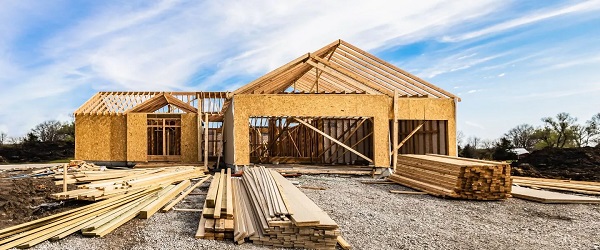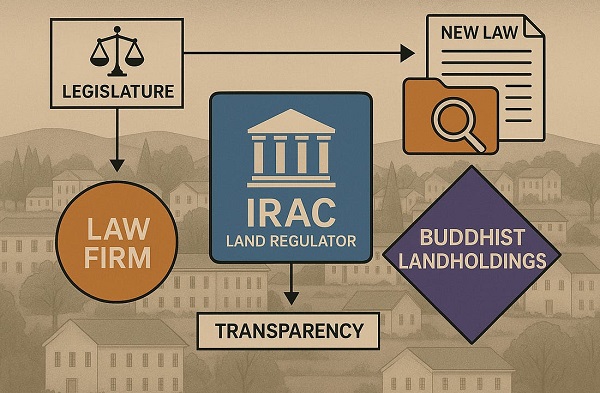Economy
After 140-Odd Years, Can’t We Figure Rail Out Yet?

From the Frontier Centre for Public Policy
A typical train these days has over 100 cars. Each rail car, depending on the load, is at least one, and often several truckloads. A train needs two crew to operate it. Are you going to come up with 100 to 200 truck drivers to replace that one, individual train, as well as the trucks, trailers, and space on the highways in a moment’s notice, and then do that for the entire economy?
In all the fuss about the Canadian rail disruption, one thing jumped out at me. Here’s how the National Post reported it:
“Despite the economic impacts, the Canadian Industrial Relations Board ruled earlier this month that the railway workers are not an essential service.”
Every member of this board should be sacked. Immediately. Because if rail is not essential, nothing is.
Did none of them pay attention in grade school? Canada was built on the railway. British Columbia joined confederation as a result, and all the gaps in between were filled in in large part because there was rail.
Yet every few years, Canadians and the Canadian economy is held hostage by some sort of disruption involving rail, usually a labour one, but occasionally a protest movement or even the weather, as if this is our first year living in the great white north.
The playbook is worn out already. After several days of pain and homage being paid to the rights of the workers to strike (yet no one talks about the rights of companies to lock out workers), the federal government eventually takes action and things get back to normal.
In this case, the feds let the entire rail network of CN and CPKC shut down on Thursday, Aug. 22, before ordering binding arbitration. But as I write this the morning of Friday, Aug. 23, the Teamsters have served strike notice on CN about an hour ago. I’m not going to try to keep up with all the developments. Maybe by the time this is published, it will all be resolved. But it seemed like that resolution was yesterday, and it fell apart today, so who knows?
And frankly, I don’t care, and I don’t think you should, either. Perhaps the union members have a point in their issues. Maybe the rail companies do, too. Fundamentally, it doesn’t matter. Sort it out. Put on you big boy/girl shorts/panties. Make it work.
At no point, ever, in the history of this nation, has rail service not been essential. From farmers needing to ship their grain at harvest to cities needing chlorine for water treatment to pavers needing asphalt from the Lloydminster refinery before the fall paving season ends, rail is utterly critical to our existence as a nation.
And anyone who says we can just backfill with trucks is a fool. A typical train these days has over 100 cars. Each rail car, depending on the load, is at least one, and often several truckloads. A train needs two crew to operate it. Are you going to come up with 100 to 200 truck drivers to replace that one, individual train, as well as the trucks, trailers, and space on the highways in a moment’s notice, and then do that for the entire economy?
Let’s look back at the rail blockades of 2020 in support of the Wet’suwet’en opposition to the Coastal GasLink pipeline. Because the blockades were related to First Nations politics, the federal Liberal government was loathe to step in. In a nod to George Orwell’s Animal Farm, it proved that in the 21st century, “some animals are more equal than others.” In this case, some First Nations were more equal than others, and could block rail lines at will, dramatically impacting parts of the economy. Never mind that the pipeline that was so ardently opposed is now the salvation for other First Nations bands to go ahead with their own Cedar LNG facility, dramatically improving their economic prospects.
Did the government perhaps learn something from the 2020 blockades – that rail disruption can’t allow these things to go on forever, especially because it would now impact the entire economy? Maybe. But if so, maybe the federal minister should have acted before an actual stoppage took place.
And that’s the key thing. Rail is nothing new to Canada. It’s almost as old as the nation itself. And yet there’s always something causing grief. Sometimes rail performance is blamed on snow in the mountains, or cold, as if this is the first time there’s ever been cold, or snow, or both, in Canada. Except they made it work for over 140-odd years, why are we now unable to make things work? Why, after the same 140-odd years of operation, we still have labour strife over rest periods and operations? Hasn’t that been enough time to figure it out, both from the company and labour sides?
How many more decades, nay, centuries do we need to figure out how to run a railroad?
Brian Zinchuk is editor and owner of Pipeline Online, and occasional contributor to the Frontier Centre for Public Policy. He can be reached at [email protected].
Business
Carney government needs stronger ‘fiscal anchors’ and greater accountability

From the Fraser Institute
By Tegan Hill and Grady Munro
Following the recent release of the Carney government’s first budget, Fitch Ratings (one of the big three global credit rating agencies) issued a warning that the “persistent fiscal expansion” outlined in the budget—characterized by high levels of spending, borrowing and debt accumulation—will erode the health of Canada’s finances and could lead to a downgrade in Canada’s credit rating.
Here’s why this matters. Canada’s credit rating impacts the federal government’s cost of borrowing money. If the government’s rating gets downgraded—meaning Canadian federal debt is viewed as an increasingly risky investment due to fiscal mismanagement—it will likely become more expensive for the government to borrow money, which ultimately costs taxpayers.
The cost of borrowing (i.e. the interest paid on government debt) is a significant part of the overall budget. This year, the federal government will spend a projected $55.6 billion on debt interest, which is more than one in every 10 dollars of federal revenue, and more than the government will spend on health-care transfers to the provinces. By 2029/30, interest costs will rise to a projected $76.1 billion or more than one in every eight dollars of revenue. That’s taxpayer money unavailable for programs and services.
Again, if Canada’s credit rating gets downgraded, these costs will grow even larger.
To maintain a good credit rating, the government must prevent the deterioration of its finances. To do this, governments establish and follow “fiscal anchors,” which are fiscal guardrails meant to guide decisions regarding spending, taxes and borrowing.
Effective fiscal anchors ensure governments manage their finances so the debt burden remains sustainable for future generations. Anchors should be easily understood and broadly applied so that government cannot get creative with its accounting to only technically abide by the rule, but still give the government the flexibility to respond to changing circumstances. For example, a commonly-used rule by many countries (including Canada in the past) is a ceiling/target for debt as a share of the economy.
The Carney government’s budget establishes two new fiscal anchors: balancing the federal operating budget (which includes spending on day-to-day operations such as government employee compensation) by 2028/29, and maintaining a declining deficit-to-GDP ratio over the years to come, which means gradually reducing the size of the deficit relative to the economy. Unfortunately, these anchors will fail to keep federal finances from deteriorating.
For instance, the government’s plan to balance the “operating budget” is an example of creative accounting that won’t stop the government from borrowing money each year. Simply put, the government plans to split spending into two categories: “operating spending” and “capital investment” —which includes any spending or tax expenditures (e.g. credits and deductions) that relates to the production of an asset (e.g. machinery and equipment)—and will only balance operating spending against revenues. As a result, when the government balances its operating budget in 2028/29, it will still incur a projected deficit of $57.9 billion when spending on capital is included.
Similarly, the government’s plan to reduce the size of the annual deficit relative to the economy each year does little to prevent debt accumulation. This year’s deficit is expected to equal 2.5 per cent of the overall economy—which, since 2000, is the largest deficit (as a share of the economy) outside of those run during the 2008/09 financial crisis and the pandemic. By measuring its progress off of this inflated baseline, the government will technically abide by its anchor even as it runs relatively large deficits each and every year.
Moreover, according to the budget, total federal debt will grow faster than the economy, rising from a projected 73.9 per cent of GDP in 2025/26 to 79.0 per cent by 2029/30, reaching a staggering $2.9 trillion that year. Simply put, even the government’s own fiscal plan shows that its fiscal anchors are unable to prevent an unsustainable rise in government debt. And that’s assuming the government can even stick to these anchors—which, according to a new report by the Parliamentary Budget Officer, is highly unlikely.
Unfortunately, a federal government that can’t stick to its own fiscal anchors is nothing new. The Trudeau government made a habit of abandoning its fiscal anchors whenever the going got tough. Indeed, Fitch Ratings highlighted this poor track record as yet another reason to expect federal finances to continue deteriorating, and why a credit downgrade may be on the horizon. Again, should that happen, Canadian taxpayers will pay the price.
Much is riding on the Carney government’s ability to restore Canada’s credibility as a responsible fiscal manager. To do this, it must implement stronger fiscal rules than those presented in the budget, and remain accountable to those rules even when it’s challenging.
Business
Sluggish homebuilding will have far-reaching effects on Canada’s economy

From the Fraser Institute
At a time when Canadians are grappling with epic housing supply and affordability challenges, the data show that homebuilding continues to come up short in some parts of the country including in several metro regions where most newcomers to Canada settle.
In both the Greater Toronto area and Metro Vancouver, housing starts have languished below levels needed to close the supply gaps that have opened up since 2019. In fact, the last 12-18 months have seen many planned development projects in Ontario and British Columbia delayed or cancelled outright amid a glut of new unsold condominium units and a sharp drop in population growth stemming from shifts in federal immigration policy.
At the same time, residential real estate sales have also been sluggish in some parts of the country. A fall-off in real estate transactions tends to have a lagged negative effect on construction investment—declining home sales today translate into fewer housing starts in the future.
While Prime Minister Carney’s Liberal government has pledged to double the pace of homebuilding, the on-the-ground reality points to stagnant or dwindling housing starts in many communities, particularly in Ontario and B.C. In July, the Canada Mortgage and Housing Corporation (CMHC) revised down its national forecast for housing starts over 2025/26, notwithstanding the intense political focus on boosting supply.
A slowdown in residential construction not only affects demand for services provided by homebuilders, it also has wider economic consequences owing to the size and reach of residential construction and the closely linked real estate sector. Overall, construction represents almost 8 per cent of Canada’s economy. If we exclude government-driven industries such as education, health care and social services, construction provides employment for more than one in 10 private-sector workers. Most of these jobs involve homebuilding, home renovation, and real estate sales and development.
As such, the economic consequences of declining housing starts are far-reaching and include reduced demand for goods and services produced by suppliers to the homebuilding industry, lower tax revenues for all levels of government, and slower economic growth. The weakness in residential investment has been a key factor pushing the Canadian economy close to recession in 2025.
Moreover, according to Statistics Canada, the value of GDP (in current dollars) directly attributable to housing reached $238 billion last year, up slightly from 2023 but less than in 2021 and 2022. Among the provinces, Ontario and B.C. have seen significant declines in residential construction GDP since 2022. This pattern is likely to persist into 2026.
Statistics Canada also estimates housing-related activity supported some 1.2 million jobs in 2024. This figure captures both the direct and indirect employment effects of residential construction and housing-related real estate activity. Approximately three-fifths of jobs tied to housing are “direct,” with the rest found in sectors—such as architecture, engineering, hardware and furniture stores, and lumber manufacturing—which supply the construction business or are otherwise affected by activity in the residential building and real estate industries.
Spending on homebuilding, home renovation and residential real estate transactions (added together) represents a substantial slice of Canada’s $3.3 trillion economy. This important sector sustains more than one million jobs, a figure that partly reflects the relatively labour-intensive nature of construction and some of the other industries related to homebuilding. Clearly, Canada’s economy will struggle to rebound from the doldrums of 2025 without a meaningful turnaround in homebuilding.
-

 Frontier Centre for Public Policy2 days ago
Frontier Centre for Public Policy2 days agoRichmond Mayor Warns Property Owners That The Cowichan Case Puts Their Titles At Risk
-

 Business2 days ago
Business2 days agoMark Carney Seeks to Replace Fiscal Watchdog with Loyal Lapdog
-

 Business2 days ago
Business2 days agoSluggish homebuilding will have far-reaching effects on Canada’s economy
-

 COVID-191 day ago
COVID-191 day agoMajor new studies link COVID shots to kidney disease, respiratory problems
-

 Business1 day ago
Business1 day agoP.E.I. Moves to Open IRAC Files, Forcing Land Regulator to Publish Reports After The Bureau’s Investigation
-

 Daily Caller2 days ago
Daily Caller2 days agoLaura Ingraham’s Viral Clash With Trump Prompts Her To Tell Real Reasons China Sends Students To US
-

 Energy1 day ago
Energy1 day agoCanada’s oilpatch shows strength amid global oil shakeup
-

 International23 hours ago
International23 hours agoBondi and Patel deliver explosive “Clinton Corruption Files” to Congress








